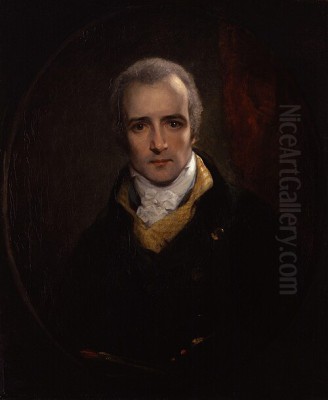
Thomas Phillips stands as a significant figure in the landscape of British art during the late Georgian and Regency periods. Active from the final decade of the 18th century through to the early Victorian era, he established himself as one of the country's foremost portrait painters, capturing the likenesses of many of the most prominent individuals of his time. Elected a Royal Academician and later serving as the institution's Professor of Painting, Phillips navigated a competitive artistic world, leaving behind a valuable visual record of the intellectual, political, and cultural life of Great Britain.
Early Life and Artistic Formation
Thomas Phillips was born on October 18, 1770, in Dudley, then part of Worcestershire. His origins were relatively modest, but his artistic inclinations emerged early. Recognizing his talent, his parents arranged for him to receive training not initially in fine art painting, but in the craft of glass painting. He was apprenticed to Francis Eginton in Birmingham, a notable producer of stained glass and painted enamels. This early training likely instilled in Phillips a strong sense of draughtsmanship and an understanding of colour and composition, albeit within a different medium.
The lure of London, the epicentre of the British art world, proved strong. Around 1790, Phillips made the pivotal move to the capital, seeking opportunities to further his artistic education and career. Armed with an introduction, he met Benjamin West, the esteemed American-born painter who held the prestigious position of President of the Royal Academy following the death of Sir Joshua Reynolds. West, known for his grand historical canvases, employed the young Phillips, utilizing his skills likely honed under Eginton, to assist with work on the stained-glass windows being installed in St George's Chapel at Windsor Castle.
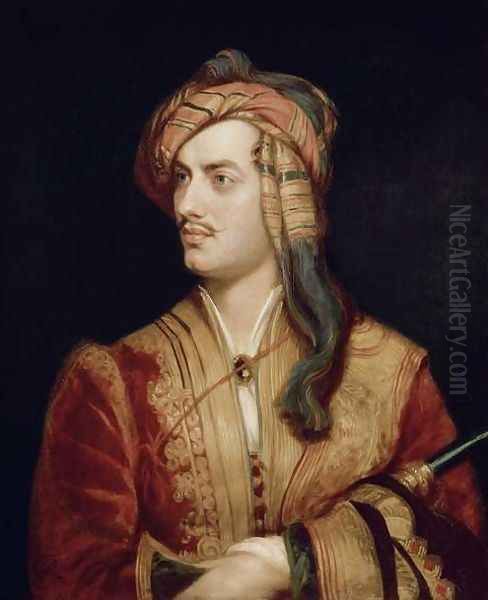
This connection to West was significant, placing Phillips within the orbit of the Royal Academy establishment. In 1791, he formally enrolled as a student in the Royal Academy Schools, immersing himself in the academic tradition which emphasized drawing from the antique and the life model, and studying the works of Old Masters. This formal training provided the essential foundation for his future career, moving him beyond craft towards the ambitions of high art.
His progress was swift. In 1792, Phillips made his debut at the Royal Academy's annual exhibition, submitting a 'View of Windsor Castle'. In these early years, influenced perhaps by his association with West and the prevailing taste for elevated subjects, Phillips also attempted history painting. He exhibited works such as 'The Death of Talbot, Earl of Shrewsbury, at the Battle of Castillon', 'Ruth and Naomi', and 'Elijah restoring the Widow's Son'. These subjects, drawn from history and the Bible, demonstrated his ambition to engage with the most respected genres of academic art.
The Turn to Portraiture
Despite these early forays into historical subjects, Phillips soon recognized that his true strength, and indeed the most reliable path to professional success in the competitive London art market, lay in portraiture. From around 1796 onwards, he increasingly dedicated his efforts to capturing the likenesses of his contemporaries. This was a field dominated by established figures and rising stars, demanding not only artistic skill but also social acumen to attract patrons.
Phillips entered a demanding arena. Sir Thomas Lawrence was rapidly ascending, soon to become the undisputed leader in the field, known for his dazzling brushwork and flattering portrayals. John Hoppner was another major rival, enjoying royal patronage and a fashionable clientele. Other talented portraitists like William Owen, also a Royal Academician, and the slightly younger John Jackson, known for his robust character studies, were active contemporaries vying for commissions.
Against this backdrop, Phillips steadily built his reputation. He did not possess the flamboyant virtuosity of Lawrence, nor perhaps the society connections of Hoppner in his prime. Instead, Phillips gained renown for the solidity and truthfulness of his likenesses, his reliable draughtsmanship, and his ability to convey the character of his sitters without excessive flattery or dramatic effect. His approach was often more restrained, focusing on a clear depiction of features and personality.
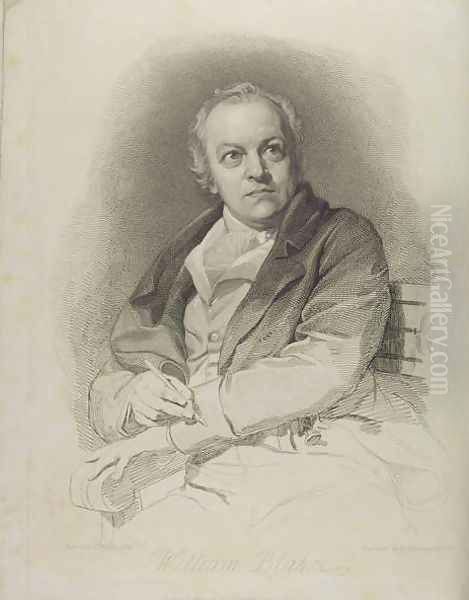
His practice grew, and he began to attract a distinguished clientele. He painted aristocrats, politicians, military men, clergymen, scientists, writers, and fellow artists. His studio became a place where the faces of the era's establishment and intellectual elite were recorded for posterity. His success was built on a combination of artistic talent, professionalism, and likely a degree of diligence and reliability that appealed to patrons.
Style and Approach
Thomas Phillips's style is firmly rooted in the British academic tradition of the late 18th and early 19th centuries. His training at the Royal Academy Schools and his association with Benjamin West grounded him in the principles of sound drawing, balanced composition, and a respect for naturalistic representation. While he occasionally painted mythological subjects, such as his 'Venus and Adonis' exhibited in 1798, his primary focus remained the human face and figure.
His portraits are generally characterized by their clarity and directness. He paid careful attention to achieving a convincing likeness, rendering facial features with precision. His drawing is typically strong and assured, providing a solid structure for his paintings. Compared to the often-dramatic lighting and fluid brushwork of Lawrence, Phillips's handling of paint tends to be smoother and more controlled, though certainly not lacking in competence or sensitivity to texture and form.
His colour palettes are often rich but sober, appropriate to the formal attire and serious demeanour of many of his sitters. He demonstrated skill in rendering fabrics – the sheen of silk, the texture of velvet, the crispness of linen – adding to the realism and tactile quality of his portraits. Backgrounds are typically subdued, often simple drapery or a suggestion of an interior, ensuring that the focus remains firmly on the sitter.
While perhaps less overtly psychological than some portraitists, Phillips possessed a keen ability to capture a sense of the sitter's presence and personality. His portraits often convey intelligence, gravity, or quiet dignity. He seemed less interested in imposing a predetermined artistic formula onto his subjects and more focused on producing an honest and recognizable representation. This quality of straightforwardness and reliability became a hallmark of his work.
His portraits of men, in particular, often project an air of authority and intellect, reflecting the public roles many of them occupied. His depictions of women, while perhaps less numerous or famous than those by Lawrence, are rendered with sensitivity and grace. He adapted his approach to suit the individual, demonstrating versatility within his consistent overall style.
Notable Sitters and Key Works
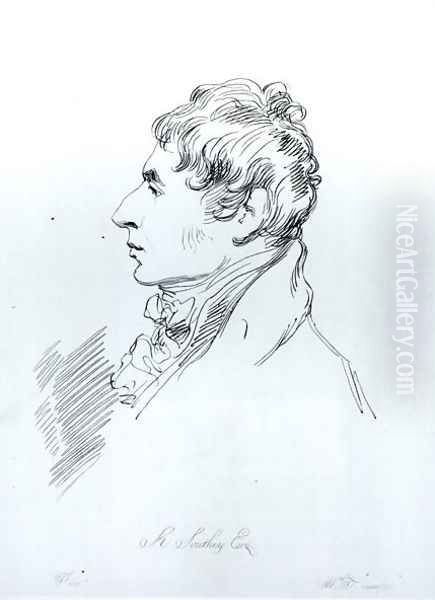
The measure of a successful portrait painter often lies in the prominence of their sitters, and by this standard, Thomas Phillips achieved considerable success. He painted a remarkable cross-section of the leading figures of his day, creating images that have become iconic representations of these individuals.
Perhaps his most famous portrait is that of the poet George Gordon Byron, 6th Baron Byron. Phillips painted Byron on more than one occasion, but the 1813 portrait, depicting the poet in Albanian dress, became particularly celebrated. Commissioned by Byron's publisher, John Murray, it captured the brooding Romanticism and exoticism associated with the poet, becoming one of the defining images of Byron. This work, widely reproduced through engravings, cemented Phillips's reputation.
Another highly significant portrait is his depiction of the visionary poet and artist William Blake, painted in 1807. Commissioned by William Hayley, this intense, spiritualized image is considered one of the most insightful portraits of Blake, capturing the inner intensity of the artist. It remains a key work in the collection of the National Portrait Gallery in London.
Phillips also painted Blake's fellow poets and friends from the Lake District circle. He produced portraits of Robert Southey, the Poet Laureate, and Samuel Taylor Coleridge, capturing the intellectual weight of these literary giants. His portrait of the novelist and historian Sir Walter Scott is another important work, depicting the renowned author with thoughtful dignity.
His sitters extended beyond the literary world. He painted prominent scientists and intellectuals, including the remarkable Mary Somerville, a pioneering science writer and mathematician. His portrait of her conveys her intelligence and composure. He also painted Sir Humphry Davy, the famous chemist, and Joseph Henry Green, a surgeon and close friend of Coleridge.
Political and aristocratic figures frequently sat for Phillips. His works include portraits of Hugh Percy, 3rd Duke of Northumberland, John Bligh, 4th Earl of Darnley, and William Wyndham, a notable parliamentarian. He also painted clergymen, such as Joseph Allen, Bishop of Bristol, and military figures associated with exploration, like Sir Edward Parry and Sir John Franklin, famous for their Arctic expeditions, and the African explorer Hugh Clapperton.
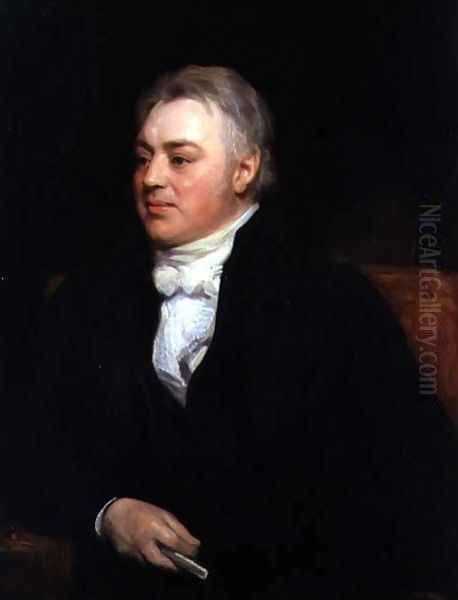
While portraiture dominated his output after the mid-1790s, his earlier subject pictures, like 'Venus and Adonis', show his engagement with mythological themes popular within the academic tradition. However, it is his portraits that form the core of his legacy, providing an invaluable gallery of the men and women who shaped Britain during a transformative period.
The Royal Academy and Academic Life
Thomas Phillips's career was deeply intertwined with the Royal Academy of Arts. Membership in the Academy was the highest mark of professional recognition for an artist in Britain at the time, and Phillips achieved this distinction relatively early in his career. He was elected an Associate of the Royal Academy (ARA) in 1804, a stepping stone to full membership.
Just four years later, in 1808, he was elected a full Royal Academician (RA). This honour solidified his position within the London art establishment and brought with it responsibilities, including teaching in the RA Schools and participating in the governance of the institution. Phillips took these duties seriously, becoming an active and respected member of the Academy.
His commitment to academic principles and his articulate manner led to his appointment as Professor of Painting at the Royal Academy in 1824. He succeeded the eccentric and highly imaginative Swiss-born painter Henry Fuseli in this prestigious post. The Professorship involved delivering a series of annual lectures to the students of the RA Schools on the theory, practice, and history of painting.
Phillips held the position of Professor of Painting until 1832, when he resigned due to ill health. During his tenure, he delivered ten lectures, which were well-regarded for their clarity and scholarship. These lectures covered a range of topics central to academic art theory, likely discussing principles of composition, drawing, colour, invention, and the study of Old Masters. In 1833, following his retirement from the post, he published these lectures under the title "Lectures on the History and Principles of Painting," making his insights available to a wider audience and contributing to the discourse on art theory in Britain.
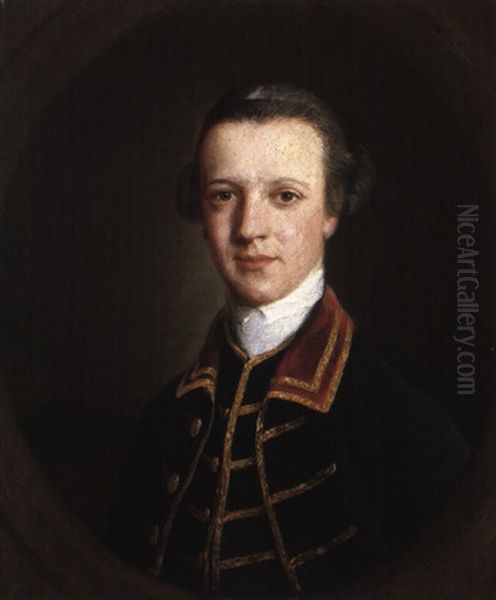
Beyond his formal roles at the RA, Phillips was also involved in the broader artistic and intellectual community. He was elected a Fellow of the Royal Society (FRS) and a Fellow of the Society of Antiquaries (FSA), honours that reflect his standing not just as an artist but as a man of learning and culture. Furthermore, he demonstrated a commitment to the welfare of his fellow artists, becoming one of the founders of the Artists' General Benevolent Institution, a charity established to support artists and their families in times of need.
Contemporaries and Artistic Context
Thomas Phillips operated within a vibrant and competitive British art scene. His career spanned a period that saw the legacy of the great 18th-century masters like Sir Joshua Reynolds and Thomas Gainsborough give way to the rise of Romanticism and the consolidation of the Royal Academy's influence. Understanding his place requires considering his relationship with his contemporaries.
His most direct rivals in portraiture were, as mentioned, Sir Thomas Lawrence, John Hoppner, William Owen, and John Jackson. Lawrence, who succeeded Benjamin West as President of the Royal Academy in 1820, set the standard for fashionable portraiture with his brilliant technique and flattering style. Phillips offered a more sober, arguably more solid alternative. Hoppner, though his career declined somewhat in later years, had enjoyed significant patronage. Owen was a respected colleague within the Academy, while Jackson was known for his vigorous, often less formal, male portraits.
Phillips maintained a professional relationship with Benjamin West, his early mentor figure, throughout West's long presidency of the RA. He also succeeded Henry Fuseli, a very different artistic personality known for his dramatic and often unsettling explorations of the sublime and the supernatural, as Professor of Painting.
Other major figures were active during Phillips's career, even if their primary genres differed. J.M.W. Turner, arguably Britain's greatest painter, was a fellow Academician, revolutionizing landscape painting with his dramatic use of light and colour. John Constable, another RA, brought a new naturalism and emotional depth to the depiction of the English countryside. Sir David Wilkie achieved enormous popularity with his detailed narrative scenes of everyday life, influencing genre painting across Europe. Phillips would have known these artists through the Royal Academy, participating in the same exhibitions and institutional life.
His work can be seen as part of the mainstream of British portrait painting, upholding the standards of likeness and competent execution established by predecessors like Reynolds, but adapted to the tastes and personalities of the Regency and early Victorian eras. He did not radically innovate in the manner of Turner or Constable, but he provided a consistent and high-quality service to patrons seeking dignified and accurate representations of themselves and their families.
Later Life and Legacy
Thomas Phillips continued to paint actively through the 1820s and 1830s, though he resigned his professorship at the Royal Academy in 1832 due to declining health. He remained a respected figure in the London art world until his death.
He passed away at his home at 8 George Street, Hanover Square, London, on April 20, 1845, at the age of 74. He was buried in the churchyard of St Marylebone Parish Church, a location later redeveloped, though memorials exist within the current church.
Thomas Phillips's legacy rests primarily on his substantial body of portraiture. He created a valuable visual record of the key figures of British society over several decades. His portraits of Byron and Blake, in particular, have become enduring images, widely recognized and reproduced. His work provides insight into the personalities, fashions, and social standing of the individuals who shaped Britain during the Napoleonic Wars, the Regency, and the reigns of George IV and William IV.
While perhaps overshadowed in popular memory by the brilliance of Lawrence or the innovations of Turner and Constable, Phillips holds a secure place in the history of British art. He was a consummate professional, a skilled craftsman, and an insightful observer of character. His role within the Royal Academy, particularly as Professor of Painting, also highlights his contribution to the institutional and intellectual life of art in Britain.
Today, his works can be found in major public collections, including the National Portrait Gallery in London (which holds a significant number of his portraits, including Blake and Byron), Tate Britain, the Royal Academy of Arts Collection, the National Trust (in various country houses), and numerous university collections, particularly at Oxford and Cambridge colleges for whom he painted Masters and benefactors. His paintings continue to be valued for their historical significance and their solid artistic merit. He remains an important figure for understanding the art and society of his time.
Conclusion
Thomas Phillips RA was more than just a painter of faces; he was a chronicler of an age. Through diligent work and considerable skill, he rose from provincial beginnings to become a leading portraitist in London and a respected member of the Royal Academy. His portraits offer a window into the world of Regency and early Victorian Britain, capturing the likenesses of poets, politicians, scientists, and aristocrats with clarity and insight. While navigating a field populated by brilliant rivals like Sir Thomas Lawrence, Phillips carved out his own distinct reputation for reliable, characterful, and well-crafted portraiture. His contributions as an artist, teacher, and member of Britain's artistic institutions solidify his importance in the narrative of British art history.